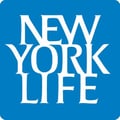New annualized premium for supplemental health insurance products, (collectively accident, critical illness, cancer, hospital indemnity, and other supplemental health insurance products) increased 6% in the first quarter of 2022 year-over-year. During the same period, new annualized premiums for workplace life insurance and disability insurance fell, according to LIMRA’s workplace benefits sales surveys.
Supplemental Health Insurance
Total workplace supplemental health insurance premium was $1.1 billion, up 6% from the same period in 2021. The industry has seen four straight quarters of strong growth in supplemental health insurance.
Most supplemental health product lines―accident, critical illness, cancer, and hospital indemnity insurance―recorded positive growth in premium in the first quarter of this year. Other supplemental health products, which represent products that do not fit the other categories, such as gap insurance, minimum essential coverage plans, limited benefit medical, and heart/stroke products, saw a decline in sales.
Accident insurance increased 9%, critical illness rose 2%, cancer insurance grew 13%, and hospital indemnity jumped 12%.
“Coming out of the pandemic, employers are looking at the benefits they offer to better support the needs of their workers and we’re seeing an increased interest in supplemental health insurance products,” said Patrick Leary, corporate vice president and director of LIMRA’s workplace benefits research program. “During the pandemic, our research showed that employees found a number of benefits more important to them than prior to it. These included supplemental health benefits.”
Life Insurance
For first quarter 2022, the participating life carriers issued $1.5 billion in total new annualized premium life insurance sales, a decrease of 16% from first quarter 2021.
“We saw significant increases during the pandemic, which are hard to sustain. Both the term and permanent product lines experienced year-over-year drops in new annualized premium sales. A few companies, however, drove the overall decline in industry sales, with three of the top five carriers posting significant sales declines,” Leary notes.
Group life insurance sales fell 18% while individual life insurance sales were up 28%.
Disability Insurance
Total workplace disability insurance new premium was $1.4 billion for the first three months of 2022, a year-over-year decline of 12%. In fact, nearly all the disability product lines experienced a year-over-year decline in new premium sales. The short-term disability product lines posted the steepest decline, down 19%, while the long-term disability products were down 6%.
“While the overall industry decline in new premium sales this quarter was driven by a few companies, individual company sales were mixed. More than half of the participating companies reported double- or triple-digit increases in new premium sales,” Leary said.
LIMRA’s workplace benefits sales surveys for life insurance, disability insurance, and supplemental health represent at least 90% of their respective annualized premium markets.
The latest data table with U.S. workplace sales trends can be viewed in LIMRA’s Fact Tank.
This article is provided by NAIFA partner LIMRA. For members, you can learn more about LIMRA and how to partner within the Member Portal.














